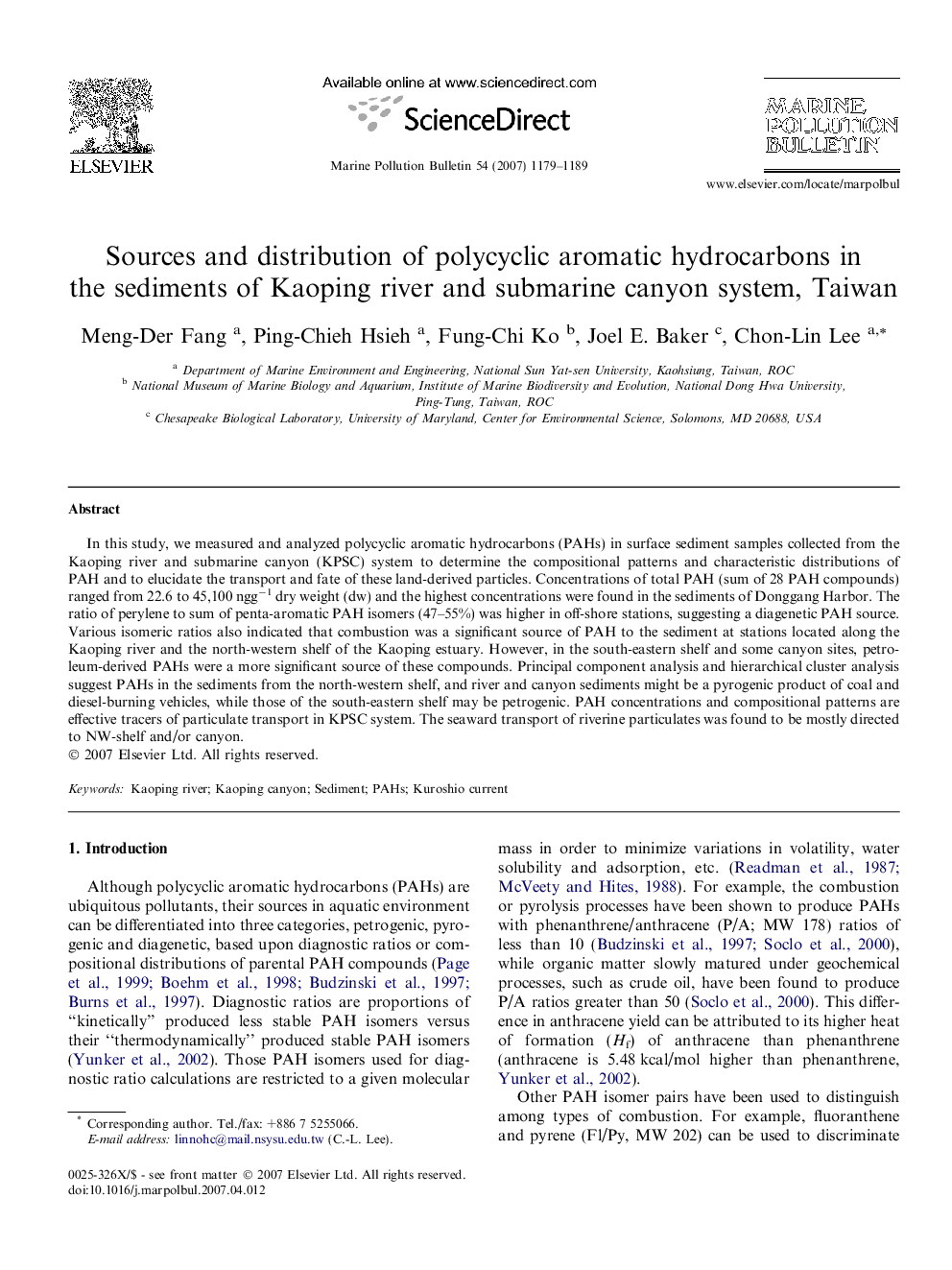| Article ID | Journal | Published Year | Pages | File Type |
|---|---|---|---|---|
| 4477840 | Marine Pollution Bulletin | 2007 | 11 Pages |
In this study, we measured and analyzed polycyclic aromatic hydrocarbons (PAHs) in surface sediment samples collected from the Kaoping river and submarine canyon (KPSC) system to determine the compositional patterns and characteristic distributions of PAH and to elucidate the transport and fate of these land-derived particles. Concentrations of total PAH (sum of 28 PAH compounds) ranged from 22.6 to 45,100 ngg−1 dry weight (dw) and the highest concentrations were found in the sediments of Donggang Harbor. The ratio of perylene to sum of penta-aromatic PAH isomers (47–55%) was higher in off-shore stations, suggesting a diagenetic PAH source. Various isomeric ratios also indicated that combustion was a significant source of PAH to the sediment at stations located along the Kaoping river and the north-western shelf of the Kaoping estuary. However, in the south-eastern shelf and some canyon sites, petroleum-derived PAHs were a more significant source of these compounds. Principal component analysis and hierarchical cluster analysis suggest PAHs in the sediments from the north-western shelf, and river and canyon sediments might be a pyrogenic product of coal and diesel-burning vehicles, while those of the south-eastern shelf may be petrogenic. PAH concentrations and compositional patterns are effective tracers of particulate transport in KPSC system. The seaward transport of riverine particulates was found to be mostly directed to NW-shelf and/or canyon.
